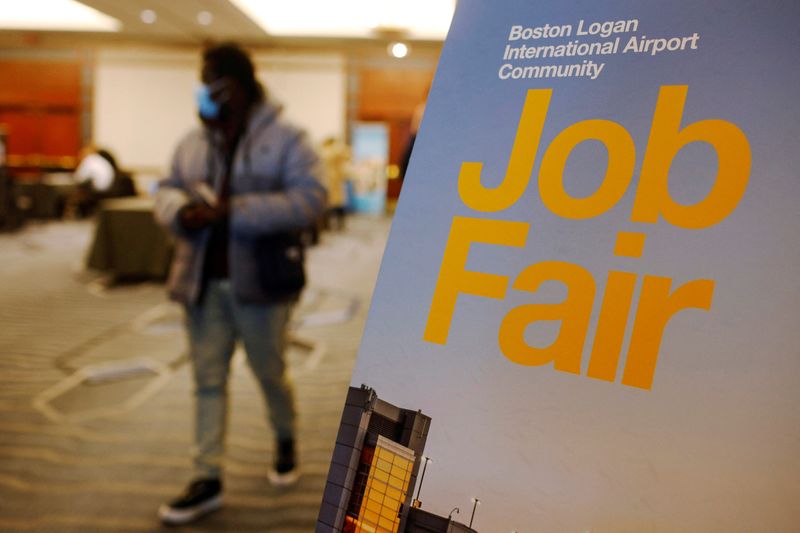By Geoffrey Smith
Investing.com -- The U.S. economy continued to create jobs at an impressive clip in June, making it easier for the Federal Reserve to carry on with a series of aggressive raises in interest rates.
Nonfarm employment rose by 372,000 through the middle of last month, only a marginal slowdown from a revised 384,000 in May and well above analysts' forecasts for a gain of 268,000. The Department noted particularly strong gains in professional and business services, leisure and hospitality, and health care.
Average hourly earnings also stayed strong, growing 0.3% on the month and 5.1% on the year, a little ahead of expectations.
The numbers come less than a day after two senior Federal Reserve officials - governor Chris Waller and St. Louis Fed President James Bullard, both expressed a preference for raising the target range for Fed Funds by another 75 basis points this month.
"This job report does nothing to change the Fed track," said Roberto Perli, head of global policy research at Piper Sandler and a former Fed economist. "Despite a clear slowdown in job creation and wage growth recently, the labor market remains in good shape for now. This gives the Fed cover to continue to focus exclusively on bringing down inflation and remain hawkish."
U.S. stock futures fell on the news, while bond yields rose as markets interpreted the news as a green light for more monetary tightening in an economy that still appears to have plenty of momentum. By 08:55 AM ET (1255 GMT), Dow Jones futures were down 118 points, or 0.4%, while S&P 500 futures were down 0.7%, and Nasdaq 100 futures were down 1.2%. All three had been largely flat ahead of the release.
"The level of non-farm payrolls has been completely and utterly inconsistent with anything that could possibly be called a recession, as indeed has the length of hours worked," UBS Global Wealth Management's chief economist Paul Donovan had said in a morning note ahead of the release.
Average weekly hours worked stayed at 34.5 in June. While that number has eased from a decade-high over the last year, it's still very much in line with historical averages. The unemployment rate, meanwhile, remained at 3.6% of the workforce for the fourth month in a row.
The numbers mean that the private sector has now recovered all the net job losses seen at the start of the pandemic. By contrast, government employment is still some 664,000 lower than in February 2020, the Labor Department said.
